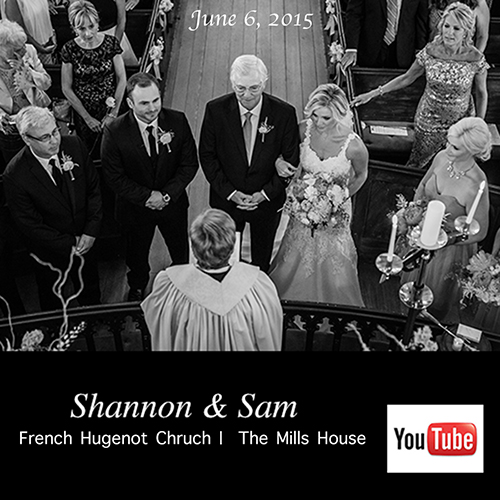We had such a beautiful day with Shannon and Sam celebrating their marriage in downtown Charleston. This wedding was perfect and they tied the knot in one of the cities oldest and spectacular churches: The French Huguenot. I have added some historical details at the end of the post regarding the wooden organ and history which is definitely found only in Charleston. After the ceremony the whole group was escorted through downtown by a bagpiper to The Mills House and the party continued!
We want to thank Shannon, Sam and both families for the hospitality and taking care of our crew like one of the family. In addition, it was a pleasure working with planner extraordinaire Erin and Casey Walters from The Mills House for our second time in a month-great job Casey.
We hope you love the photos as much as we did creating and capturing them.
Wedding Coordinator: Erin Dudley at Erin.Dudley@danielislandclub.com
Catering: Casey Walters at Cwalters@wyndham.com
More about the French Huguenot: The replacement for the original building was completed in 1800 and dismantled in 1844 to make way for the present Gothic Revival edifice, designed by Edward Brickell White and dedicated in 1845. The church was damaged by shellfire during the long bombardment of downtown in the War Between the States and was nearly demolished in the severe earthquake of 1886.
When the building was completed in 1845, the church also purchased and installed a tracker organ carved in the style and shape of a Gothic chapel. Its keys are connected with the pipe valves by a wooden “tracker’ or mechanical linkage which responds to the organists touch faster than any modern mechanism allows. Its tone is similar to the Baroque organs for which Bach and Handel composed. It was built by the leading American organ builder of the first half of the nineteenth century, Henry Erben. After the fall of Charleston in 1865, federal soldiers dismantled the organ and were loading it on a New York bound ship when the pleas of the organist, Mr. T.P. O’Neale, and some influential friends saved it.

